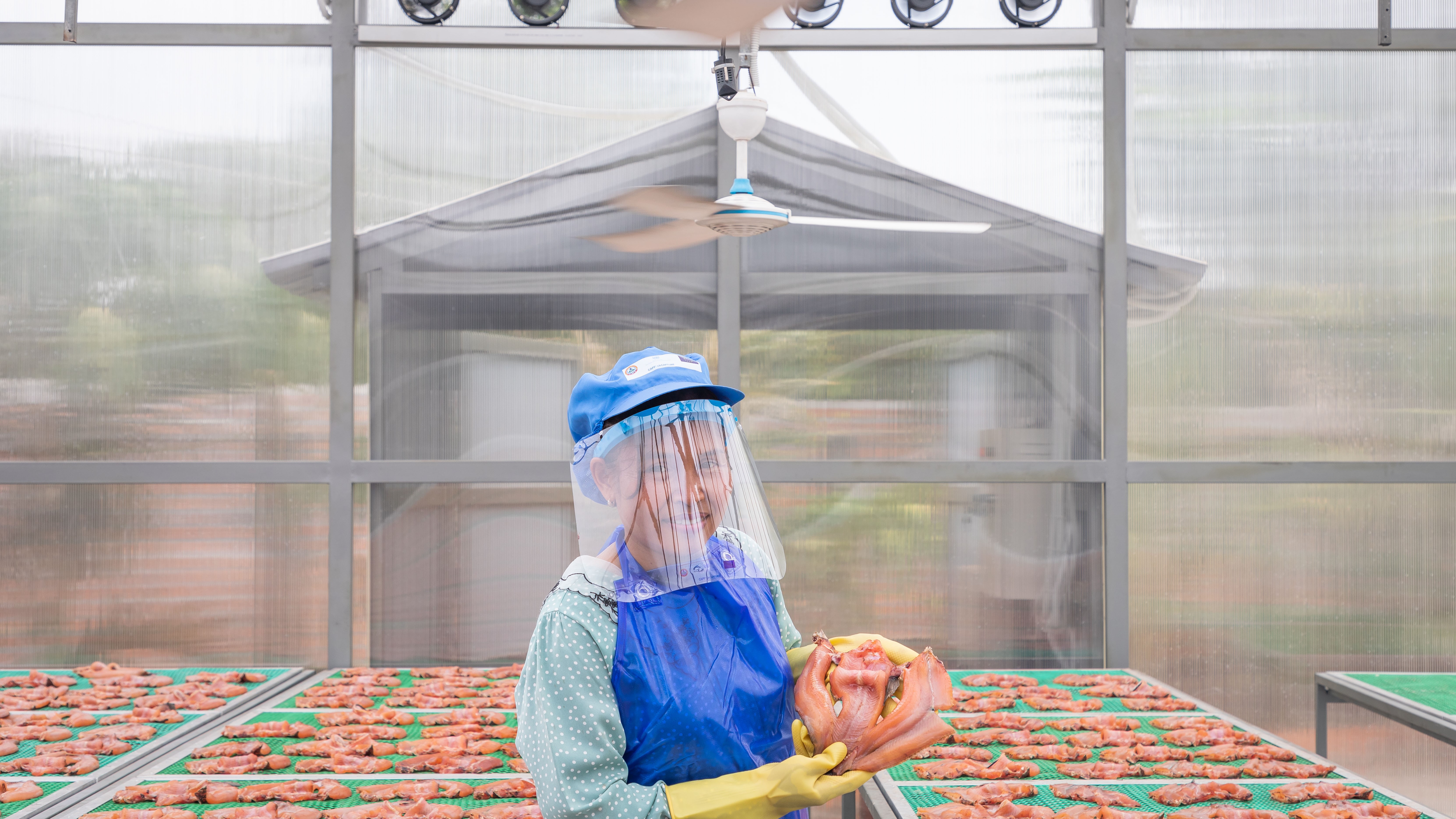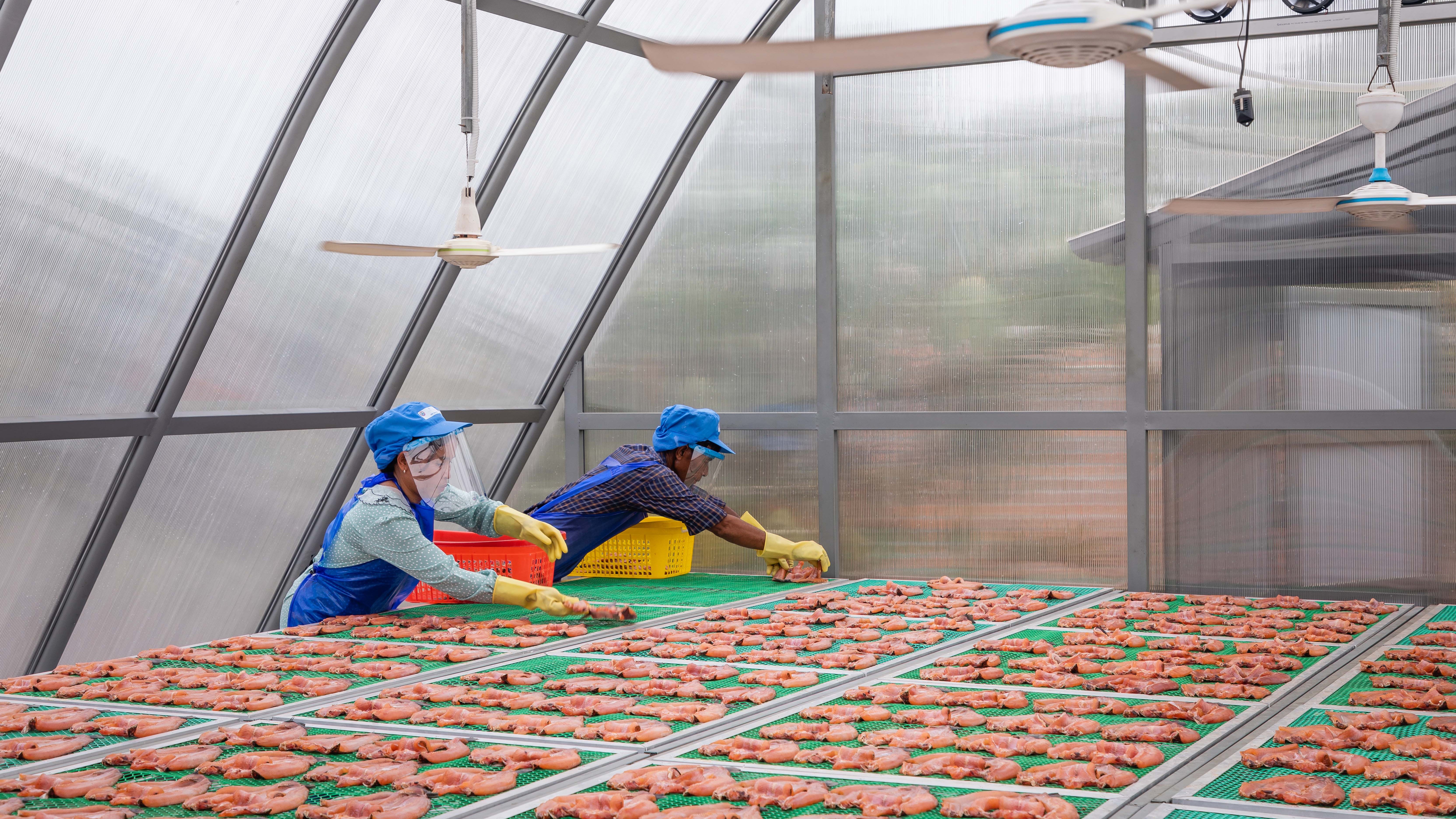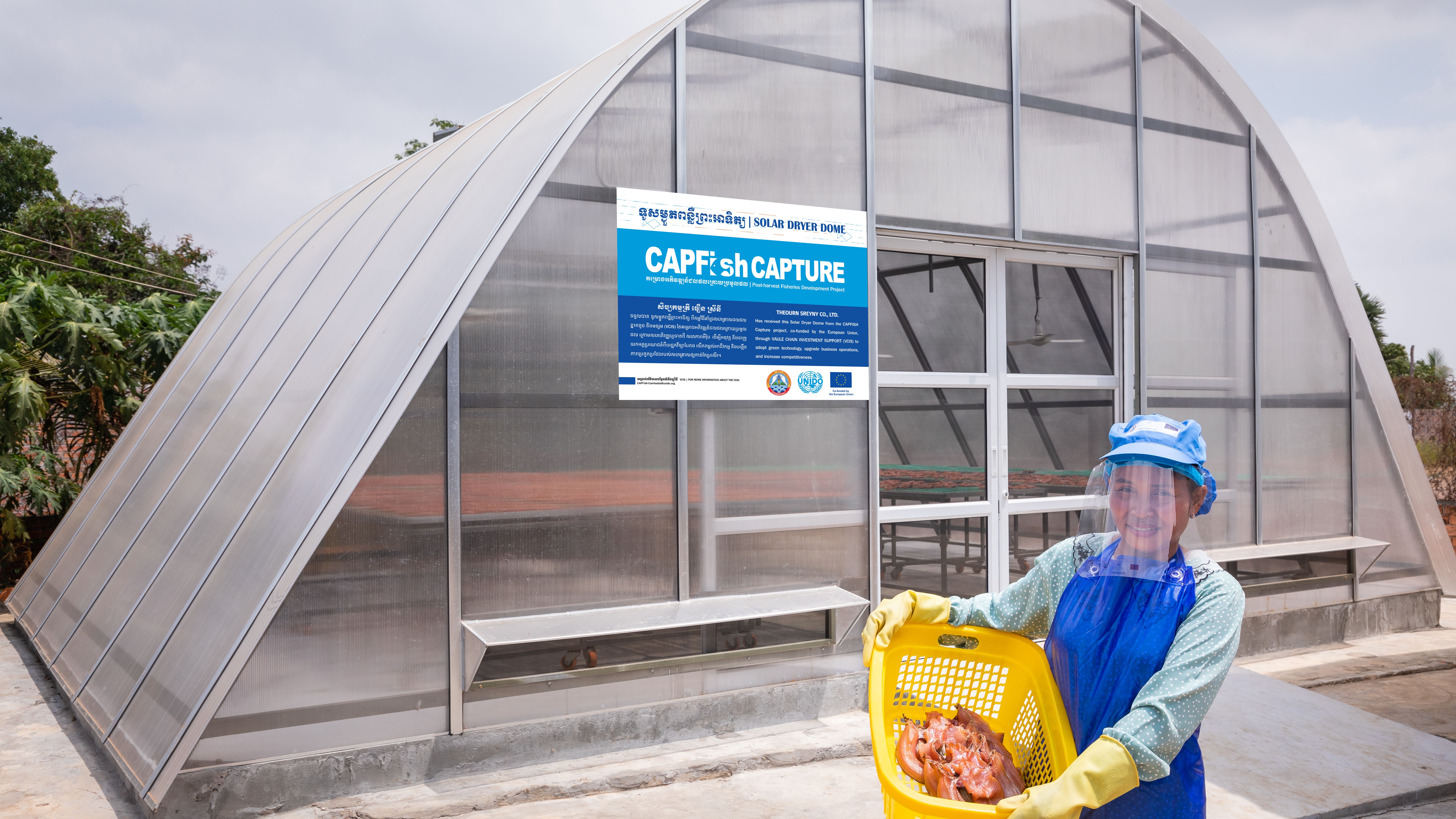

Solar fish-drying tech has the potential to transform Cambodia’s fisheries
15 June 2023 Seetharama Shetty Thombathu and Samruol Im

French version here
All around Cambodia, a familiar scene takes place every day: families feast on fish caught in the Mekong River or other rivers and lakes. Millions of Cambodians enjoy tilapia, snapper, snakehead, carp and catfish. At countless tables around the country amok trei – coconut fish steamed in banana leaves - is served .
Usually the fish in this and other dishes has been dried for preservation. Fish processors and fishmongers dry it to sell, and people at home dry their fish to keep for future meals. Local fish processors typically dry their fish under the sun, or by burning firewood or coal. Every Cambodian knows the sight and smell of fish being dried in the traditional way.
This being such a long-held tradition, it would seem strange – and hard – to change it now. So, why bother?
As it turns out, traditional drying methods are inefficient, unhygienic and unsustainable. It takes a long time to dry fish in the open air; the fish may get infected with bacteria, they dry unevenly and the flavour is diminished, and they are exposed to dirt, insects, and animal droppings. In addition, drying methods that use firewood, coal, or fossil fuels can harm individual people through smoke and respiratory ailments, and they contribute to climate change and habitat loss.
For these reasons, more and more people and local fish processors are switching to a modern method of drying fish, using what’s called a “solar dryer dome.” The dome is a lightweight structure with a steel frame that is built on a concrete floor and covered in translucent white polycarbonate material. Inside the dome, the fish is laid out on adjustable trays. The dome’s translucent material lets in sun’s rays, which help dry the fish – and it protects the fish from dirt and bugs. A solar-powered ventilator keeps the dome at the optimum temperature for drying.
Drying fish in a dome is not only faster and safer than traditional methods. Most importantly for many consumers, the flavour of the fish is consistently better preserved too.


The switch to the domes is a small revolution in the widespread practice of drying fish, and it’s being helped along by Cambodia’s Fisheries Administration (FiA) with support from the European Union and the UN Industrial Development Organization (UNIDO). Together, these partners have provided technical and investment support to ten fish processing enterprises to adopt this technology and learn to how to use it. More enterprises are in line for similar support.
The differences are stark. While traditional drying methods take three-to-seven days, and depend more heavily on weather conditions, the solar dryer dome takes about 8-12 hours and is less susceptible to fluctuations in the weather. The dome emits zero pollutants, causing no more coughing and burning throats from wood or coal fires. In the long term, that means cleaner air and healthier people.
As this innovation gains in popularity, it can reshape the country’s post-harvest fisheries, making them more productive and sustainable. With more and better fish, the country’s post-harvest fisheries will be able to compete better with importers within Cambodia, as well as in markets in Asia, Europe, and beyond. This seemingly small move will contribute to the Cambodian economy, with more jobs and investment opportunities. The greater the investment in this simple technology, the greater the payback.
The benefits are not only economic. Using this simple technology, Cambodians will be enjoying safer and tastier fish. That’s something to celebrate.
Seetharama Shetty Thombatu is a UNIDO-Chief Technical Adviser, CAPFISH-Capture project (co-funded by the EU).
Samruol Im is a UNIDO-National Communication and Visibility Expert, CAPFISH-Capture project (co-funded by the EU).
Republished with permission from The Phnom Penh Post